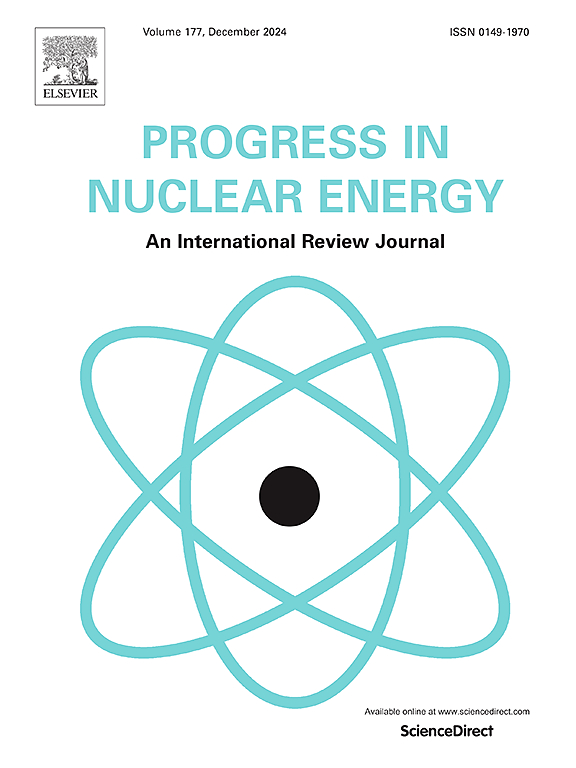Development and validation of a subchannel analysis code for PWRs based on the two-phase and three-field model
IF 3.3
3区 工程技术
Q1 NUCLEAR SCIENCE & TECHNOLOGY
引用次数: 0
Abstract
The pressurized water reactor (PWR) continues to be the most prevalently operated reactor type worldwide, with core thermal-hydraulic analysis constituting a crucial aspect of overall reactor design. To achieve a refined distribution of key physical fields within the core and enhance both reactor safety and economic efficiency, the SACOS (Subchannel Analysis Code Of Safety) V3.0 (hereinafter referred to as SACOS) code was developed based on a two-fluid, three-field model at the pin-by-pin level for PWR cores. This code incorporates closure relations such as wall friction, heat transfer, turbulent mixing, and interfacial interaction. It utilizes the finite difference method and the SIMPLE algorithm for numerical discretization and solution, facilitating fine-scale simulations of the entire reactor core. The physical models of the code were validated against experiments such as the GE-3✕3 rod bundle mixing test, the CE-5✕5 heat transfer test, the PNL-7✕7 flow blockage test, the CE-15✕15 inlet stream test and the THTF-8✕8 dispersed flow test, demonstrating good agreement between the computed and experimental results, thereby verifying the accuracy of the models. Finally, the code was applied to steady-state full-core calculations of a typical PWR and transient calculations under SBLOCA conditions for a single assembly, with comparative analysis on the impact of the droplet phase on cladding temperature under high void fraction conditions. The results demonstrate that SACOS is capable of both steady-state and transient core simulations. It can be concluded that the SACOS code provides an effective tool for PWR safety analysis and design.
求助全文
约1分钟内获得全文
求助全文
来源期刊

Progress in Nuclear Energy
工程技术-核科学技术
CiteScore
5.30
自引率
14.80%
发文量
331
审稿时长
3.5 months
期刊介绍:
Progress in Nuclear Energy is an international review journal covering all aspects of nuclear science and engineering. In keeping with the maturity of nuclear power, articles on safety, siting and environmental problems are encouraged, as are those associated with economics and fuel management. However, basic physics and engineering will remain an important aspect of the editorial policy. Articles published are either of a review nature or present new material in more depth. They are aimed at researchers and technically-oriented managers working in the nuclear energy field.
Please note the following:
1) PNE seeks high quality research papers which are medium to long in length. Short research papers should be submitted to the journal Annals in Nuclear Energy.
2) PNE reserves the right to reject papers which are based solely on routine application of computer codes used to produce reactor designs or explain existing reactor phenomena. Such papers, although worthy, are best left as laboratory reports whereas Progress in Nuclear Energy seeks papers of originality, which are archival in nature, in the fields of mathematical and experimental nuclear technology, including fission, fusion (blanket physics, radiation damage), safety, materials aspects, economics, etc.
3) Review papers, which may occasionally be invited, are particularly sought by the journal in these fields.
 求助内容:
求助内容: 应助结果提醒方式:
应助结果提醒方式:


